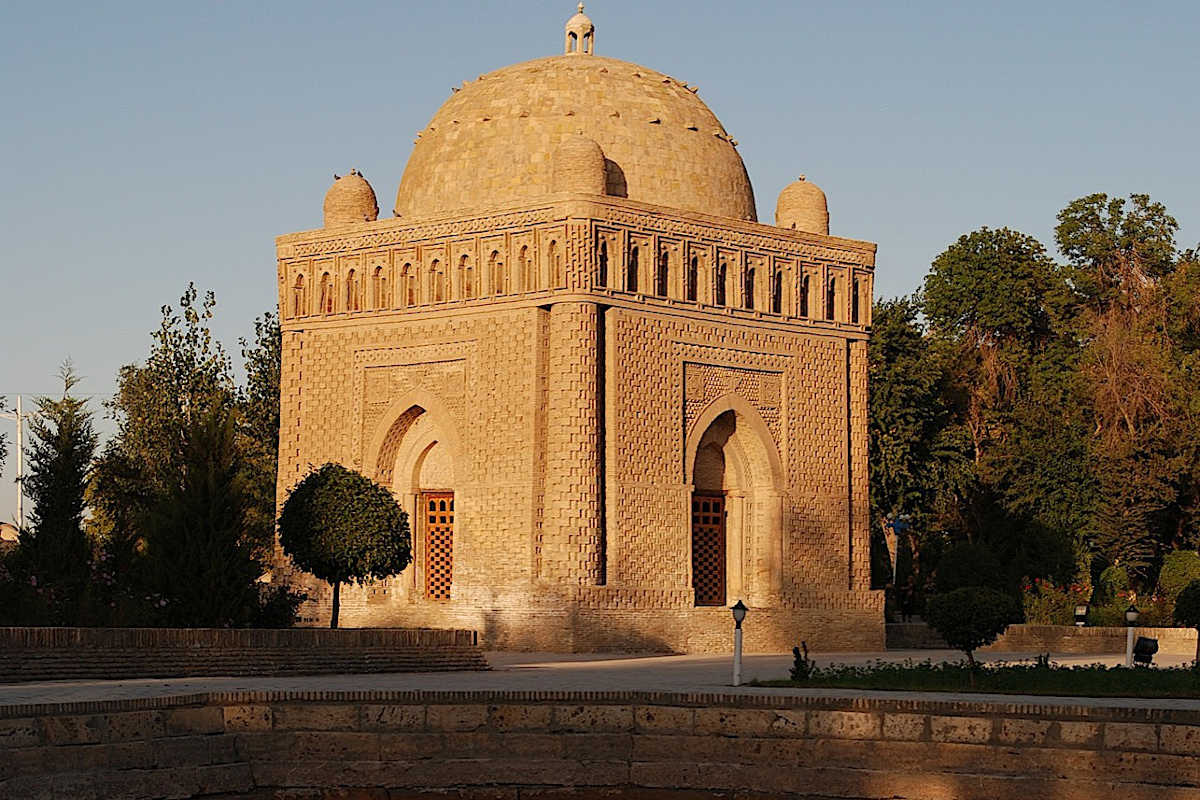Bukhara - Ismail Samani Mausoleum

The Ismail Samani Mausoleum in Bukhara: a masterpiece of Islamic architecture
The Ismail Samani Mausoleum in Bukhara, located opposite the Ark in the depths of the Central Culture and Leisure Park, is world-famous and attracts the attention of scientists, architects and historians from all over the world. This unique construction has inspired countless artists and fascinates anyone interested in the historical past of the peoples of Central Asia.
The mausoleum bears witness to the great development of building techniques and the high standard of architecture of the time. High-quality roasted bricks and alabaster mortar were used in the construction, which contributed to the remarkable longevity of the building. The construction of the Ismail Samani Mausoleum was accompanied by a remarkable development of mathematical knowledge, especially geometry. The most experienced builders of the time used the methods of pre-designing buildings and calculating their proportions based on mathematical relationships. This led to a harmonious unity of the overall structure that is still impressive today.
The mausoleum is a central building in the shape of a cube with slightly inclined surfaces and a hemispherical dome. The building is characterised by a design that connects the dome with the squares of the walls and thus shapes the interior and exterior appearance of the building. The intelligent load distribution is reflected in the square room walls, which have four arches on the walls and four more in the corners. The massive, 1.8 metre thick walls ensured that the building survived for a millennium without collapsing.
At the top of the building, behind the arches, there is a light-flooded gallery that opens outwards with an arcade of small pointed arch windows. This structure lends the building a certain lightness and at the same time provides stability. Inside, it creates diffuse lighting that emphasises the mystical atmosphere of the space. All four facades of the mausoleum are designed identically: The centre of each side is pierced by a large lancet arch, while the corners are flanked by mighty three-quarter brick columns.
The patterned brickwork that adorns both the interior and exterior walls is particularly noteworthy. The artistic play of light and shadow on the textured surface gives the building a lively texture and a unique visual depth. According to legend, the mausoleum was built on the orders of Ismail Samani – the actual founder of the Samanid state, who conquered Bukhara in 874 and made it his capital – in honour of his father Ahmad ibn Asad. It later became the Samanid family tomb: Ismail himself was buried there, and according to the inscriptions above the entrance, Ismail’s grandsons were also buried there. The mausoleum was built between 892 and 943.
The mausoleum’s purpose as a tomb led to the creation of a square single-chamber room with a three-tiered interior structure: a quadrangle, an octagon and a domed shell. This room layout refers to a long tradition of domed architecture and demonstrates a high degree of architectural sophistication. The construction of the light openings in the gallery is particularly fascinating: their relatively high position, the tiny size reminiscent of embrasures and the presence of sloping window sills and moulding-like window niches outside the building illustrate the well thought-out construction method.
The Ismail Samani Mausoleum in Bukhara has survived the centuries almost intact and is rightly considered one of the most perfect works of world architecture. It is not only an outstanding example of Islamic architecture, but also a symbol of the cultural heyday of Central Asia during the Samanid dynasty. Its architecture harmoniously combines mathematical precision, structural stability and artistic sophistication, making it a masterpiece that has stood the test of time.
